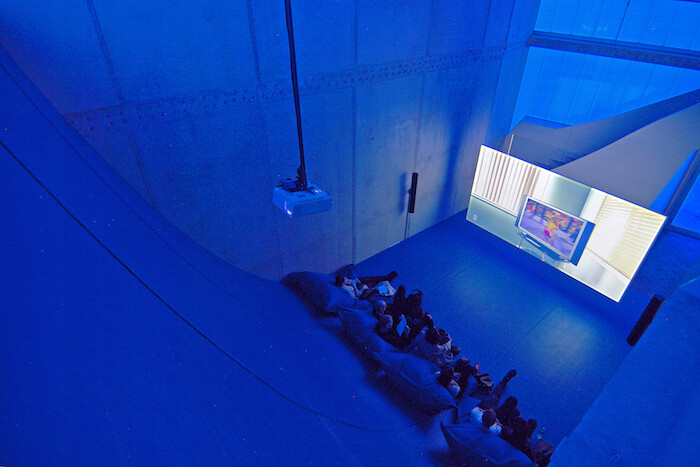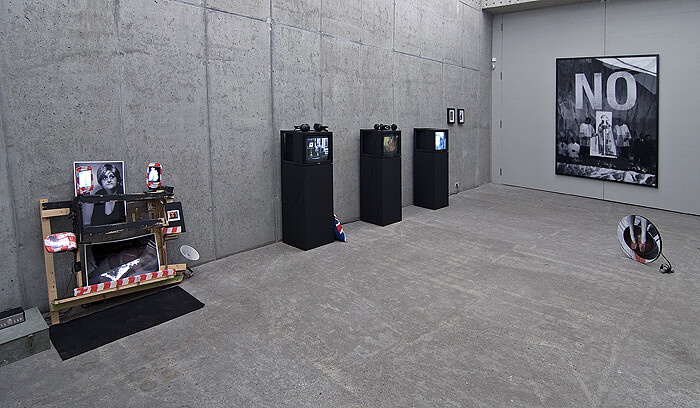Categories
Subjects
Authors
Artists
Venues
Locations
Calendar
Filter
Done
December 3, 2015 – Review
Hito Steyerl’s “Left To Our Own Devices”
Ana Teixeira Pinto

Entering the philosophical lexicon during the eighteenth century, the term “aesthetic” is predicated on a double negation: its object is neither an object of knowledge, nor an object of desire. By introducing the notion of disinterest, Kant brought the concept of taste into opposition with the concept of morality. At the beginning of his “Critique of Judgment,” he illustrates his reasoning with the example of a palace, in which aesthetic judgment isolates the form alone, disinterested in knowing whether a mass of working poor toiled to build it. The human toll must be ignored in order to aesthetically appreciate an artwork. Art forms, we are told, operate at a remove from social forms. But this remove needs manufacturing. This is the role of the institution and the social technologies it employs. In her video installation Guards (2012), German artist Hito Steyerl shows how this space of Innerlichkeit [inwardness] is built on the backs of those it excludes.
The museum guards who work for the Art Institute of Chicago are all African-American—a makeup indicative of the over-representation of the city’s black minority population in low-wage jobs. From the reports by head of security, Martin Whitfield, and fellow guard Ron Hicks, we can …
December 19, 2012 – Review
“Believers”
Kirsty Bell

What does it mean to be a believer or a non-believer? Is belief essential for society’s wellbeing or is it merely divisive? And is there an alternative to this antagonistic binary opposition? The group exhibition “Believers” at Berlin’s KOW sets these questions and more in motion.
The notion of belief is, of course, most usually associated with religion and the exhibition takes this as its starting point: Santiago Sierra’s NO (Pope) (2011) a large-scale photograph in which the Pope is framed by the large projection of the word “NO” immediately greets the eye, as do works by that most garrulous of blasphemers, the late Christoph Schlingensief. In his Little Shrine (2006), images of an actress playing Princess Diana become stand-ins for an absent deity. Meanwhile, excerpts taken from an eight-part series he made for MTV, U3000 (2000), shot on board the Berlin U-Bahn, have Schlingensief himself center stage as moderator/provocateur. We see him here, face smeared red, in the throes of a voodoo-like frenzy and random trouser dropping, while interviewing fellow passengers. Ritualized improvisational chaos replaces the self-conscious codes of youth programming. Next to this, a monitor plays YouTube footage of Pussy Riot’s “Punk Prayer,” the band’s notorious impromptu performance in …